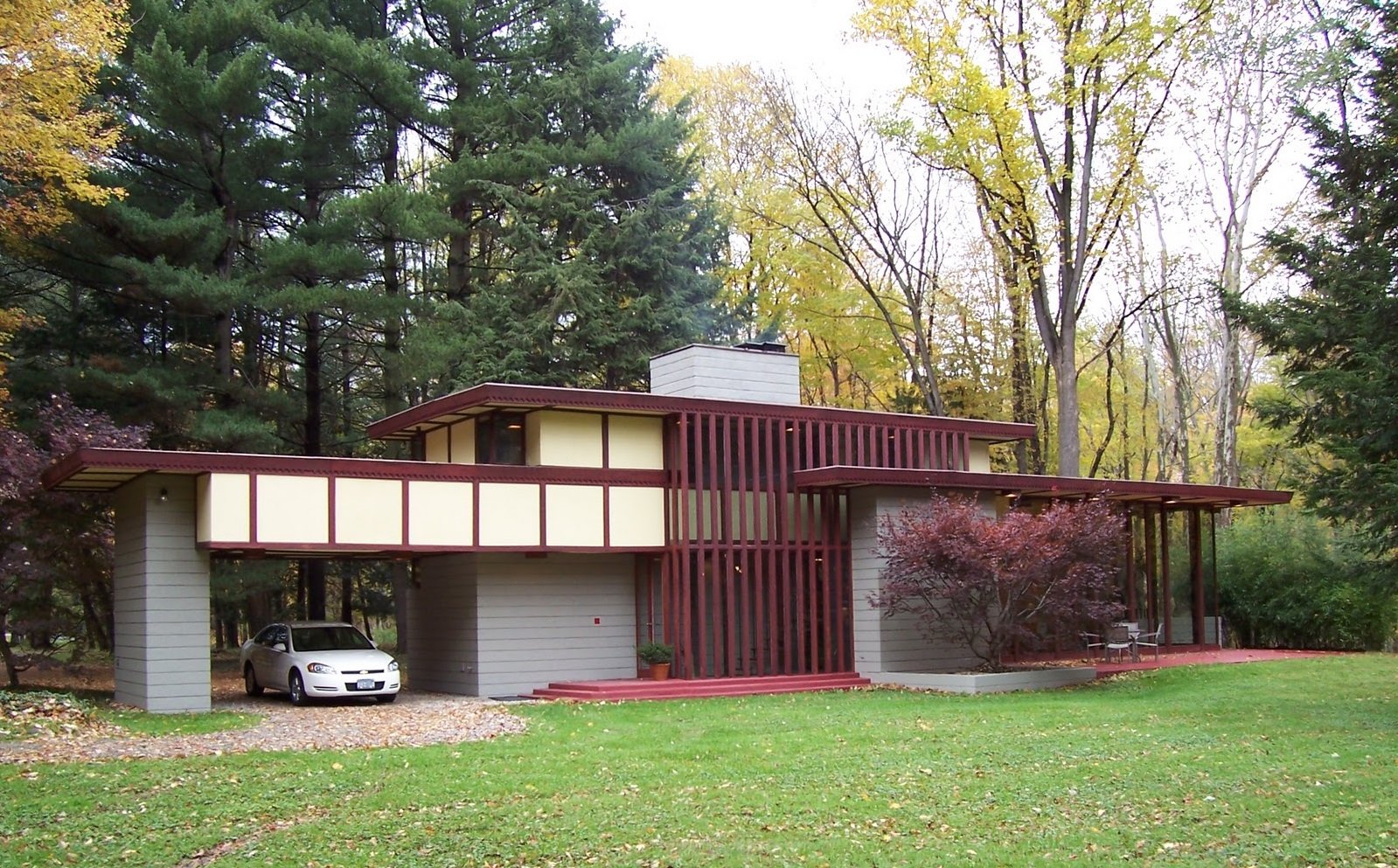#8523. Wright-inspired Modernist Façade: Horizontal Lines and Natural Harmony
What we see here is a striking example of modernist architecture in the style of Frank Lloyd Wright, demonstrating his famous organic design philosophy. This residential house is harmoniously integrated into the forest landscape, creating a dialogue between the man-made structure and its natural surroundings.
The façade showcases a masterful combination of horizontal and vertical elements. The horizontality is emphasized by the projecting eaves of the flat roof with characteristic overhangs that create an interplay of light and shadow. Vertical accents are presented as burgundy wooden elements, particularly expressive in the central part of the house where they form a rhythmic screen.
The color palette of the façade is restrained yet expressive: light beige panels combined with burgundy details and gray vertical supports create visual contrast. A characteristic feature is the large panoramic windows that blur the boundary between interior and exterior space, allowing nature to "penetrate" the house.
Special attention should be paid to the integration of the open carport into the overall composition — another recognizable element of Wright's style, who avoided enclosed garages in favor of more open structures. The architectural image is complemented by a small garden area and terrace on the opposite side of the house, creating a space for outdoor relaxation.
When designing your own façade, several techniques from this building are worth considering: the use of horizontal lines to visually expand the space; contrasting combination of materials and colors to create visual interest; integration of functional elements (such as canopies or screens) as decorative details; and, most importantly, harmonious interaction with the surrounding landscape, where the building doesn't conflict with nature but becomes its organic extension.
